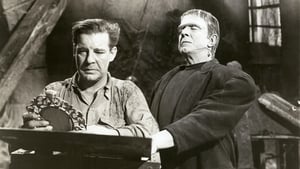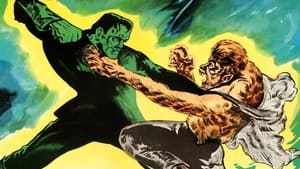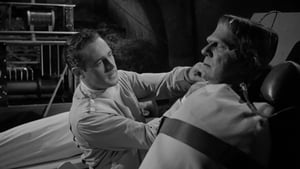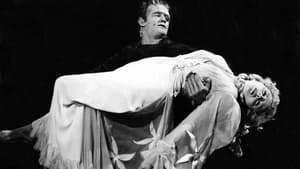Video Sources 0 Views
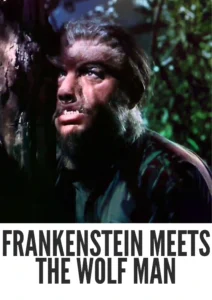
Download Frankenstein Meets the Wolf Man (1943) Colorized HD | Lon Chaney Jr. | Creature Feature Horror
Synopsis

Delve into the thrilling world of classic monster cinema with Frankenstein Meets the Wolf Man, a chilling horror film from 1943, now spectacularly colorized for a revitalized viewing experience. Starring the legendary Lon Chaney Jr., this movie delivers a captivating blend of horror, suspense, and creature feature elements. Ideal for fans of classic horror and those looking for a thrilling monster mash, this HD download brings a unique piece of cinematic history to your screen. This film is also known under the titles Frankenstein Meets the Wolfman, and The Wolf Man Meets Frankenstein.
Frankenstein Meets the Wolf Man follows the tormented Larry Talbot (Lon Chaney Jr.), the Wolf Man, as he seeks a permanent cure for his lycanthropy. Driven to desperation, Talbot hopes to end his curse and the monthly transformations that plague him. His search leads him to the frozen remains of Frankenstein’s monster, hoping that the secrets of life and death held by the monster can provide him with a solution.Talbot enlists the help of Maleva (Maria Ouspenskaya), a wise and knowledgeable Romani woman, to guide him on his quest. Their journey eventually leads them to the infamous Dr. Frankenstein’s castle, where they discover the monster is still alive, albeit encased in ice. As they attempt to revive the monster, they attract the attention of Dr. Mannering (Patric Knowles), who becomes entangled in their dangerous experiment. The situation escalates as both the Wolf Man and Frankenstein’s monster are unleashed, leading to a climactic confrontation that threatens to destroy everything in their path. Frankenstein Meets the Wolf Man is a thrilling and suspenseful horror film that brings together two iconic monsters in a battle for survival.
The film features a talented cast of actors who bring these iconic characters to life:
- Lon Chaney Jr. as Larry Talbot / The Wolf Man
- Bela Lugosi as Frankenstein’s Monster
- Ilona Massey as Baroness Elsa Frankenstein
- Patric Knowles as Dr. Mannering
- Maria Ouspenskaya as Maleva
Frankenstein Meets the Wolf Man firmly resides in the horror genre, with significant elements of creature feature and suspense. Its blend of classic monster lore and thrilling action makes it a standout film in the Universal Monsters series.
Released in 1943, Frankenstein Meets the Wolf Man is a significant entry in the Universal Monsters series, a collection of iconic horror films that defined the genre in the 1930s and 1940s. This film represents a crossover event, bringing together two of the most popular monsters from the Universal stable. During this period, horror films were immensely popular, offering audiences a thrilling escape from the anxieties of World War II. Frankenstein Meets the Wolf Man showcases the studio’s ability to create compelling narratives by combining established characters and themes.
This colorized version of Frankenstein Meets the Wolf Man has been meticulously restored using advanced digital techniques, enhancing the visual experience while maintaining the film’s original atmosphere of suspense and horror. The colorization process involved a detailed analysis of the grayscale tones in the original black and white footage, assigning appropriate colors to each scene. The techniques included advanced algorithms for color palette selection and image enhancement. This painstaking process breathes new life into the characters and settings, making the story even more engaging for modern audiences. While debates about colorizing classic films continue, it introduces these films to a broader audience, ensuring their legacy for future generations.
- : Roy William Neill
- : Curt Siodmak
- : Curt Siodmak
- : George Robinson
- : Arthur Hilton
- : Universal Pictures
- : Universal Pictures
- : 74 minutes
- : MP4
- : HD (1080p)
- : Compatible with most devices, including smartphones, tablets, computers, and smart TVs.
Frankenstein Meets the Wolf Man is celebrated for its thrilling combination of two iconic monsters and its contribution to the Universal Monsters legacy. While some critics have noted its straightforward plot, the film is praised for its atmospheric settings, memorable performances, and exciting monster action. As a significant crossover event in horror cinema, Frankenstein Meets the Wolf Man remains a beloved and influential film for fans of the genre.
- : What is Frankenstein Meets the Wolf Man about?
- A: Frankenstein Meets the Wolf Man is about the Wolf Man seeking a cure for his lycanthropy and encountering Frankenstein’s monster in the process.
- : Is Frankenstein Meets the Wolf Man (1943) a classic Universal Monsters film?
- A: Yes, Frankenstein Meets the Wolf Man is a notable entry in the Universal Monsters series, bringing together two iconic characters.
- : Is this version of Frankenstein Meets the Wolf Man colorized?
- A: Yes, this version has been professionally colorized to enhance the viewing experience.
- : What makes Frankenstein Meets the Wolf Man interesting for horror fans?
- A: Frankenstein Meets the Wolf Man offers a thrilling combination of two legendary monsters and showcases classic horror themes.
- : What is the download format?
- A: The download format is MP4, which is compatible with most devices.
- : What resolution is the download?
- A: The resolution is HD (1080p), providing a high-quality viewing experience.
Watch Frankenstein Meets the Wolf Man Today!
